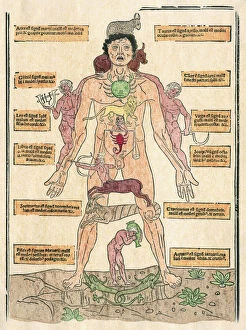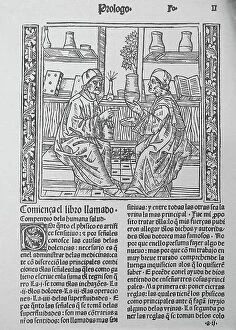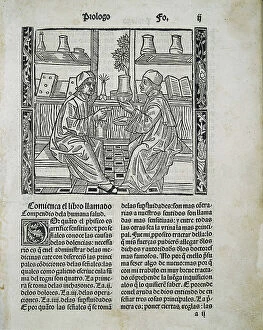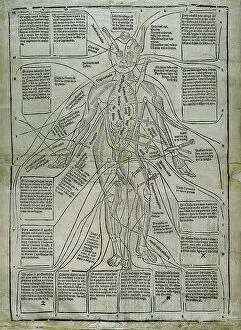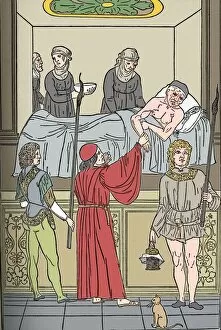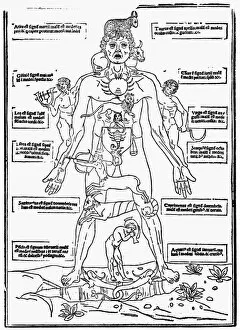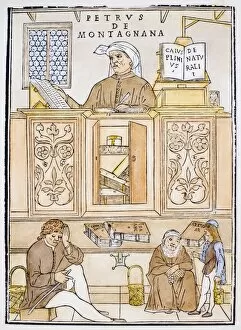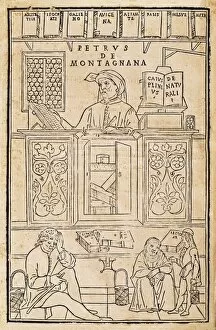Ketham Collection
"Discovering the Ancient Wisdom of Ketham: A Journey through Medical History" Step back in time to the year 1493
For sale as Licensed Images
Choose your image, Select your licence and Download the media
"Discovering the Ancient Wisdom of Ketham: A Journey through Medical History" Step back in time to the year 1493, when Johannes de Ketham's Fasciculus Medicinae was first published in Venice. This remarkable collection of medical texts provides a fascinating glimpse into the practices and beliefs of physicians during the Renaissance. One of the most intriguing aspects of Ketham's work is "The Zodiac Man, " an extraordinary woodcut depicting the astrological signs for bloodletting. In this chart, each part of the body corresponds to a specific region of the zodiac, revealing a deep connection between celestial movements and human health. Another notable feature within Fasciculus Medicinae is its exploration of plague treatment. The vivid illustrations transport us to a time when physicians faced this devastating disease head-on. We witness doctors visiting plague patients, armed with sponges soaked in vinegar and spices to ward off contagion while attendants fumigate with torches – a haunting reminder of humanity's struggle against infectious diseases throughout history. But it isn't just gruesome scenes that captivate our attention; there are also moments where knowledge is shared and dissected. Gentile Bellini's attributed woodcuts showcase lessons in dissection, offering students invaluable insights into anatomy and physiology. These images provide evidence not only of scientific progress but also highlight how art played an essential role in disseminating medical knowledge during this era. Amongst these pages, we encounter Petrus de Montagnana lecturing at Padua University – an esteemed figure imparting wisdom upon eager minds. Through these woodcuts by Bellini, we catch glimpses into lecture halls filled with aspiring healers seeking enlightenment from their learned mentors. Johannes de Ketham's contributions have left an indelible mark on medical history. His meticulous documentation serves as both a testament to human curiosity and as a reminder that even centuries ago, people sought answers to the mysteries of the human body and its ailments.

